Sunday, June 6, 2010
The women of Gatsby




A time of rebellious behavior and living life according to the new founded American Dream. The women of this era are portrayed in two different lights in the novel which are defiant and foolish. Women began to take a step forward in society during the 1920's. As women start to detach themselves from the stereotypical proper and prim manner in society, there are new stereotypes created. It is perfectly all right for women to drink and control themselves wildly at parties just as men do. They express their views much more and begin to take control of their newly established place in society. Daisy was treated as a lower person for years in her relationship with Tim. She allowed herself to be degraded as her husband committed acts of infidelity. Daisy eventually liberates herself when she has an affair with Gatsby. Now Daisy has found a way to bring Tom under her thumb. On the other hand, women also are portrayed as extremely foolish and easily used by men. Myrtle is an example for Tom is using her. To Tom, Myrtle is a game. He uses her for fun and never intends on having a real relationship with her. He goes to her when he pleases and she will always be there waiting for him. Tom does not treat her with respect, yet she continually returns to his side. Another view of women shows them as gossipers and out of control. When attending parties at Gatsby's house the women are intoxicated to where they can no longer walk or think properly. The women are said to have ripped their dresses, jumped in the fountains and danced wildly. At Tom and Myrtle's party, Myrtle's sister Catherine and her friends are gossiping the entire time. Catherine gives false information about Daisy, Tom and Myrtle. The American dream has a lot to do with the behavior patterns of the women in the novel. The novel shows women as becoming obessed with the 'perfect American life.' The women of gatsby will do whatever it take to fit in, which is recklessness, defiance and foolishness.
Wednesday, June 2, 2010
Who is Dan Cody? Dan Cody was Gatsby’s best friend. Gatsby also has a picture of him hanging in his wall. Gatsby’s new life began on the lake when he met Dan Cody. Dan Cody was a wealthy copper minor from Montana. Cody and Gatsby sailed around the world three times over the next five years. During this time, Gatsby served as steward, mate, skipper, and secretary for Dan. Gatsby chose then to abstain from alcohol forever after witnessing the destructive behaviors of Cody during his periods of drunkenness. Gatsby even had to jail Cody on occasion to prevent him from committing dangerous acts.
Dan is a somewhat coarse man who became immensely wealthy during the Gold Rush. He mentored Gatsby when he was a young man and gave him a taste of elite society. He taught him how to do business and he taught him all he new. Dan Cody also left Gatsby a large amount of money before he died because Gatsby had helped him and had taken care of him. Gatsby used this money to start the business that he is in now. And he uses what Dan Cody taught him to run his business. (http://www.novelguide.com/thegreatgatsby/characterprofiles.html)
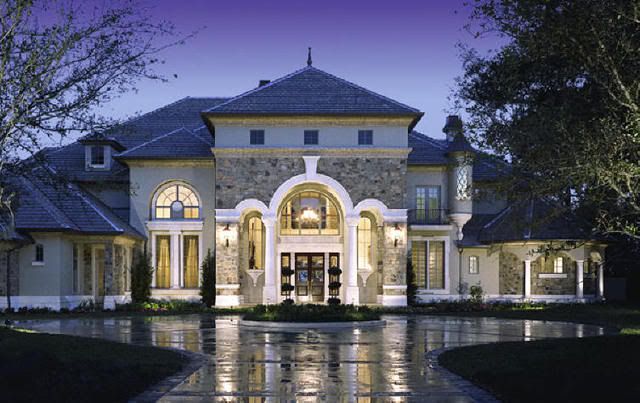

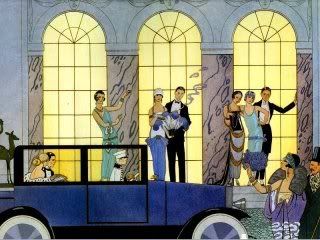
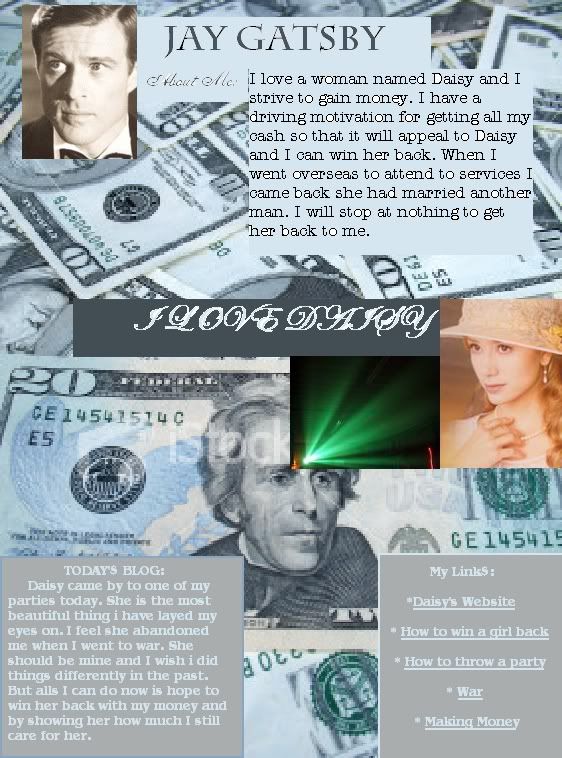
Dan is a somewhat coarse man who became immensely wealthy during the Gold Rush. He mentored Gatsby when he was a young man and gave him a taste of elite society. He taught him how to do business and he taught him all he new. Dan Cody also left Gatsby a large amount of money before he died because Gatsby had helped him and had taken care of him. Gatsby used this money to start the business that he is in now. And he uses what Dan Cody taught him to run his business. (http://www.novelguide.com/thegreatgatsby/characterprofiles.html)




Monday, May 31, 2010
Two selfish people in "The Great Gatsby" are Tom and Myrtle. Tom and Myrtle, unlike their partners, Daisy and Wilson are very selfish. Tom only wants what is beneficial to him, and so does Myrtle. They don't care about their partners or what they are going through. They only care if they are happy and if everything is going well for them. Tom doesn't care about Daisy's feelings. Tom only cares about Daisy's feelings and what she is doing if there is another man that wants to take her from Tom. For example, Tom only started caring about Daisy when he found out that Daisy and Gatsby were having an affair. For Tom's own selfish reason, because he wanted Daisy all to himself, he started to act like he actually cared for Daisy and that he loved Daisy and that he would never do anything to hurt her.
Also, Myrtle is very selfish. She doesn't care about anyone except herself and what is good for her. She doesn't care about her husband Wilson and his feelings also. The only person that Myrtle wants to be with is Tom, the person who she is having an affair with.(http://www.enotes.com/great-gatsby/q-and-a/wilsons-garage-symbol-isolation-selfishness-66369)

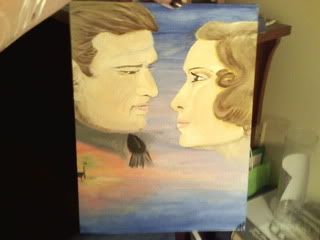
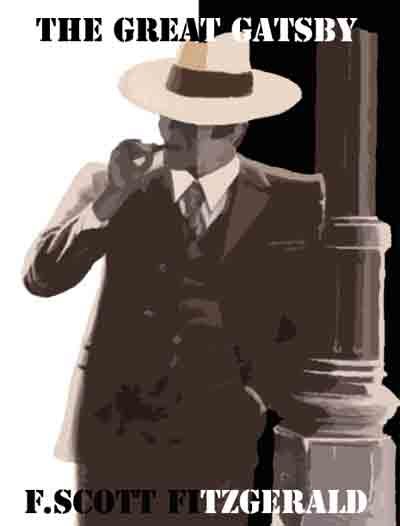
Also, Myrtle is very selfish. She doesn't care about anyone except herself and what is good for her. She doesn't care about her husband Wilson and his feelings also. The only person that Myrtle wants to be with is Tom, the person who she is having an affair with.(http://www.enotes.com/great-gatsby/q-and-a/wilsons-garage-symbol-isolation-selfishness-66369)



Thursday, May 27, 2010
Unrequited Love
Unrequited love fits "The Great Gatsby" perfectly. Jay Gatsby is in love with Daisy and Daisy is in love with Gatsby. They both love each other very much. Even though Daisy is married she is still having an affair with Gatsby. Tom is having an affair with Myrtle. Even though Tom is having an affair on Daisy with Myrtle he still loves loves Daisy very much. Tom also cares for Daisy very much.
Daisy doesn't love Tom anymore. After she met Gatsby again after five years they fell in love. Even though Tom "claims" that he loves and cares for Daisy, Daisy knows that he doesn't really mean it. Since Tom loves Daisy but Daisy doesn't love Tom, this is unrequited love.
Another example of unrequited love is Wilson and and Myrtle. Wilson and Myrtle are married to each other, but Myrtle doesn't have any feelings toward Wilson. Even though Myrtle doesn't love Wilson, Wilson loves her and cares about her and would do anything for her. He would do anything that would make her happy. Myrtle is having an affair with Tom and she is jealous of Daisy and she wants Daisy and Tom to get a divorce. (http://en.wikipedia.org/wiki/Unrequited_love)




Daisy doesn't love Tom anymore. After she met Gatsby again after five years they fell in love. Even though Tom "claims" that he loves and cares for Daisy, Daisy knows that he doesn't really mean it. Since Tom loves Daisy but Daisy doesn't love Tom, this is unrequited love.
Another example of unrequited love is Wilson and and Myrtle. Wilson and Myrtle are married to each other, but Myrtle doesn't have any feelings toward Wilson. Even though Myrtle doesn't love Wilson, Wilson loves her and cares about her and would do anything for her. He would do anything that would make her happy. Myrtle is having an affair with Tom and she is jealous of Daisy and she wants Daisy and Tom to get a divorce. (http://en.wikipedia.org/wiki/Unrequited_love)




Tuesday, May 25, 2010
The Green Light




This book has been considered by many a symbol for the "Jazz Age," a time of extraordinary wealth and promise, but Fitzgerald's novel is much more than that, presenting the truth behind the twenties and creating an atmosphere which has earned a permanent place in American literature. His novel works on many different levels, giving us unforgettable characters and events on one, as well as referring to the problems of American wealth and spirituality on another. And most importantly, what on earth is that mysterious green light? "Involuntarily I glanced seaward - and distinguished nothing except a single green light, minute and far away, that might have been the end of a dock. When I looked once more for Gatsby he had vanished, and I was alone again in the unquiet darkness." So now this brings to our attention the first symbol in this book - that mysterious green light. When he first mentions the light, we see Gatsby reaching out for it, almost worshipping it. We find out later that this green light is at the end of Daisy's dock and is a symbol for Gatsby's dream and the hope for the future. Green is the color of promise, hope, and renewal, so it is fitting that Gatsby's dream of a future with Daisy be shown physically in the novel by this green light. However, Gatsby's dream is tarnished by his material possessions, much like America is now with our obsession with wealth. This will soon corrupt him and Gatsby's dream dies because of Daisy, Gatsby, and Tom's carelessness and superficiality. At first we are given the green light as a symbol for the hope and promise of the future. Later, it is consdered the "foul wasteland" of the present. This can be interpreted as the foul, material-driven world that the main characters live in and which helps to destroy Gatsby's dream. Soon Daisy tells Gatsby that he reminds her of an advertisement. This statement shows that Daisy does not like Gatsby for himself but for the superficial illusion he represents. On a larger scale, it is through advertising that the material aspects of the American Dream are revealed. He also advertises eternal youth, wealth, and beauty constantly,which goes along with Gatsby's youthful dream of Daisy.
Sunday, May 23, 2010
What was old money and what was new money? New money in "The Great Gatsby" was money that people were making illegally and old money in "The Great Gatsby" was money that people were making the old fashion way. In "The Great Gatsby" Gatsby was making new money. He was selling illegal alcohol and making a lot of money because of it. He was making money the new way. Gatsby was getting money quick and this was making him rich fast. By him getting quick money he was allowed to throw elaborate parties, have a nice house, have nice cars, and have anything he wanted. Money was not a problem for Gatbsy. Whenever he needed money; he got it.
However, Tom was getting money the old fashioned way. Tom was making old money. He was a good citizen and he obeyed the law. He got his money from his job and he didn't get his money by doing anything illegal. All of his money was earned legally. Tom didn't know what Gatsby's job was, but he guessed since Gatsby got rich fast, had elaborate parties, a nice house and a nice car, that he was doing something illegal. Tom thought that Gatsby was a bootlegger and that he was selling illegal alcohol. (http://www.fa-mag.com/component/content/article/687.html?issue=32&magazineID=1&Itemid=73)
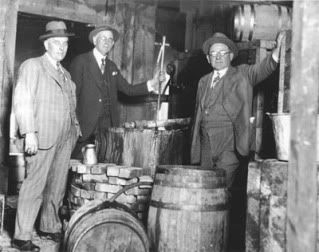



However, Tom was getting money the old fashioned way. Tom was making old money. He was a good citizen and he obeyed the law. He got his money from his job and he didn't get his money by doing anything illegal. All of his money was earned legally. Tom didn't know what Gatsby's job was, but he guessed since Gatsby got rich fast, had elaborate parties, a nice house and a nice car, that he was doing something illegal. Tom thought that Gatsby was a bootlegger and that he was selling illegal alcohol. (http://www.fa-mag.com/component/content/article/687.html?issue=32&magazineID=1&Itemid=73)




Thursday, May 20, 2010
The gangsters of the 1920' and the mafia ruled the streets during that time. Many gangster's sold alcohol and liquor. They also made alcohol. Italian gangsters ran the streets of America in the 1920s. Irish gangs did too, also.
Many Italian mafia's made alcohol and sold it. They sold the alcohol to many speakeasies. Speakeasies were illegal bars where alcohol was being served. The Italian mafia's were making a lot of money because of this. But they were also causing crime.
When the gangs grew in the 1920s so did the violence in America. Many mafia's and gangs had gang wars. Many innocent people died because if this and were injured. Because of prohibition, this allowed the gangs to grow even more. And also prohibition allowed speakeasies to become more common. (http://alliance.ed.uiuc.edu/cdrom/hononegah/Mafia_Folder/Mafia.htm)
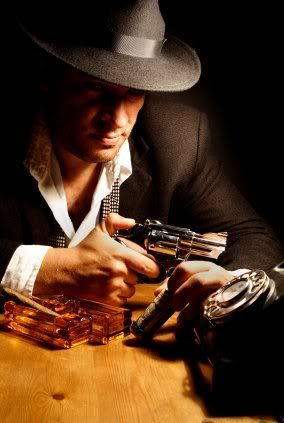


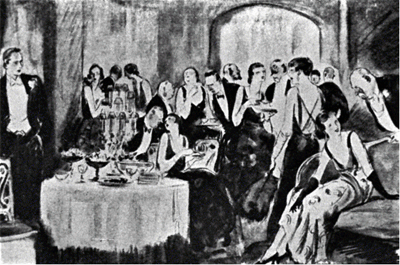

Many Italian mafia's made alcohol and sold it. They sold the alcohol to many speakeasies. Speakeasies were illegal bars where alcohol was being served. The Italian mafia's were making a lot of money because of this. But they were also causing crime.
When the gangs grew in the 1920s so did the violence in America. Many mafia's and gangs had gang wars. Many innocent people died because if this and were injured. Because of prohibition, this allowed the gangs to grow even more. And also prohibition allowed speakeasies to become more common. (http://alliance.ed.uiuc.edu/cdrom/hononegah/Mafia_Folder/Mafia.htm)





Wednesday, May 19, 2010
eastegg VS. westegg





East Egg is the fashionable group in the middle of everything, also known as "old money" or people who have always had money. Tom and Daisy represent the old establishment, living in the wealthy upper class for most of their lives. Daisy is consumed by the materialistic values associated with her social class. These people are shallow and lack values. They are careless and completely full of themselves. Daisy hits Myrtle and doesnt even turn around to see if she is okay, all she is worried about is the consequences. The social class of East Egg are inhuman; they are spoiled to such a extent that their reality has been twisted. Although these are clearly "bad" people they are envied and copied constantly by the West eggers. Throughout the novel it seems to be the West are trying to fit in the East, but East eggers, like Tom and Daisy, feel that they are too good to take part in any of that.
West Eggs are the newly rich; the people who have worked hard and earned their money in a short period of time. Their wealth is based on material possessions. Gatsby, like the West Eggers, dosent have the traditions of the East Eggers. He is considered 'new money', meaning that his wealth came to him more recently through his business that is believed to be corrupt. Despite the fact Gatsby made his fortune in a corrupt fashion he is still someone to admire because of his hopes. Nick Carraway lives in West Egg and cherishs honesty. Therefore the West represents the more moral of the two. Although West Egg is the more moral, it is still a place of excessive spending and gaudy living. Both of the eggs are people who love money, the difference is how they obtained that money and the way it has shaped their lives.
Tuesday, May 18, 2010
Jealousy is an emotion and typically refers to the negative thoughts and feelings of insecurity, fear, and anxiety over an anticipated loss of something that the person values, such as a relationship, friendship, or love. Jealousy is an experience in human relationships. It has even been observed in infants that are five months old and older. Some claim that jealousy is seen in every culture. However, others claim jealousy is a culture-specific phenomenon.
Many things can happen when a person becomes jealous. A person may become depressed and sad. This may even cause the person to hurt themselves or just be depressed for a long period of time. A person may also become angry. When a person is angry they might hurt someone or do something to harm the other person.
Jealousy can take many forms. A person may be sad, or angry because they are envious of another person. Everyone will feel the emotion of jealousy in thier lifetime and there is no avoiding it. It is a very strong emotion and it can cause people to do things that they don't mean. Jealousy has also been a theme of many novels, songs, poems, films and other artistic works. (http://www.tipsforsuccess.org/jealousy.htm)




Many things can happen when a person becomes jealous. A person may become depressed and sad. This may even cause the person to hurt themselves or just be depressed for a long period of time. A person may also become angry. When a person is angry they might hurt someone or do something to harm the other person.
Jealousy can take many forms. A person may be sad, or angry because they are envious of another person. Everyone will feel the emotion of jealousy in thier lifetime and there is no avoiding it. It is a very strong emotion and it can cause people to do things that they don't mean. Jealousy has also been a theme of many novels, songs, poems, films and other artistic works. (http://www.tipsforsuccess.org/jealousy.htm)


Sunday, May 16, 2010
Francis Scott Fitzgerald was born September 24th, 1896. He was born in St. Paul Minnesota, to an Irish upper middle class family. He was part of a Roman Catholic family. Francis Scott Fitzgerald was named after his famous second cousin Francis Scott Key. Fitzgerald attended St. Paul Academy in St. Paul from 1908–1911.
Francis Scott Fitzgerald’s first literary effort was a detective story that was published in his school newspaper when he was only 12 years old. Francis Scott Fitzgerald later got expelled from school when he was 16 for neglecting his studies. In 1913 he entered Princeton University when he became friends with future critics and writers Edmund Wilson and John Peale Bishop. He also wrote for the Princeton Triangle Club and this led to his submission of a novel to Charles Scribner's Sons. Charles Scribner's Sons loved the novel but rejected it.
Francis Scott Fitzgerald was an American author of novels and short stories.
He wrote stories that showed the jazz age. He is widely regarded as one of the twentieth century's greatest writers. He finished four novels and he had one unfinished novel called “The Love of the Last Tycoon”. Francis Scott Fitzgerald also wrote many short stories.
(http://www.sc.edu/fitzgerald/biography.html)
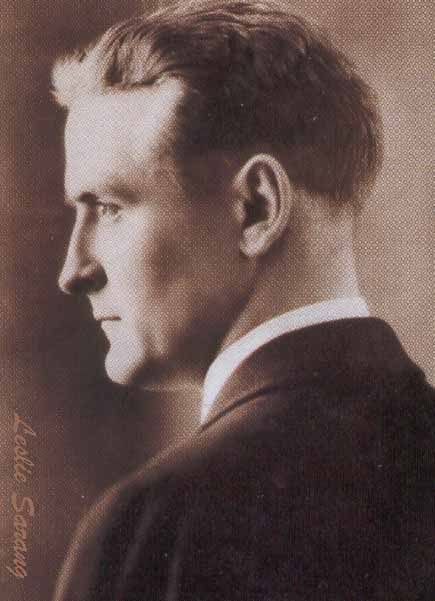
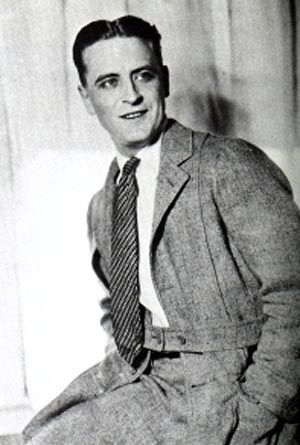
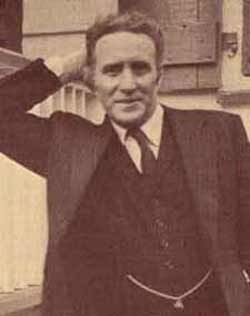
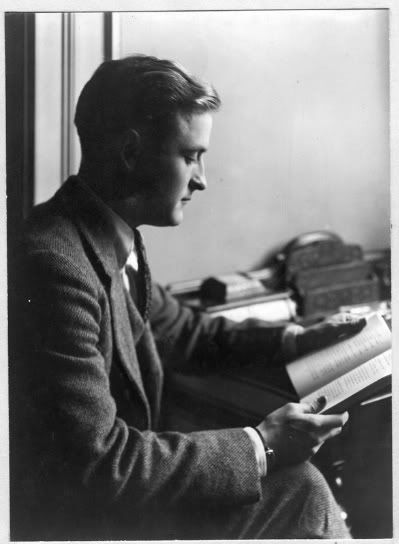

Francis Scott Fitzgerald’s first literary effort was a detective story that was published in his school newspaper when he was only 12 years old. Francis Scott Fitzgerald later got expelled from school when he was 16 for neglecting his studies. In 1913 he entered Princeton University when he became friends with future critics and writers Edmund Wilson and John Peale Bishop. He also wrote for the Princeton Triangle Club and this led to his submission of a novel to Charles Scribner's Sons. Charles Scribner's Sons loved the novel but rejected it.
Francis Scott Fitzgerald was an American author of novels and short stories.
He wrote stories that showed the jazz age. He is widely regarded as one of the twentieth century's greatest writers. He finished four novels and he had one unfinished novel called “The Love of the Last Tycoon”. Francis Scott Fitzgerald also wrote many short stories.
(http://www.sc.edu/fitzgerald/biography.html)





Wednesday, May 12, 2010
The 1920's



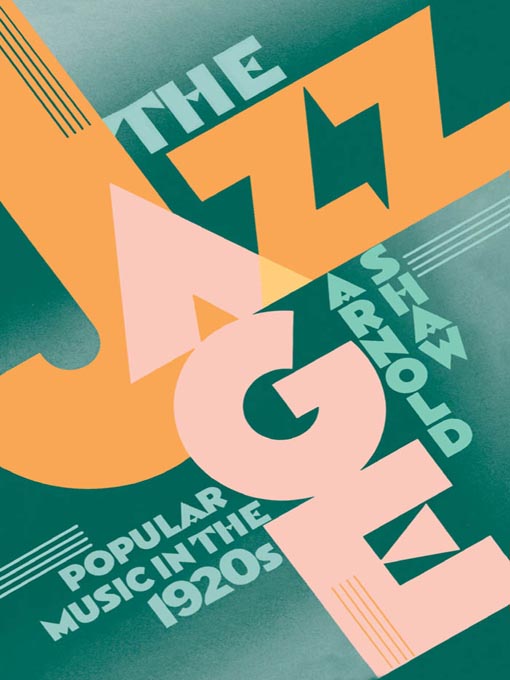
It was a time of conservatism, it was a time of great social change. From the world of fashion to the world to politics, forces clashed to produce the most explosive decade of the century.The 1920's.
In music, the three sounds were jazz, jazz, and jazz. The Jazz Age came about with artist like Bessie Smith and Duke Ellington. Youth ruled everything. From the young styles of dress to the latest celebrities. If it was young, it was the thing.It was the age of prohibition, it was the age of prosperity, and it was the age of downfall. It was the age of everything. The radio was certainly one of the most important inventions of the 1920s, because it not only brought the nation together, but it brought a whole new way for people to communicate and interact. Over the first few years of the 1920s, the automobile became a hit with everyone, especially young people who wanted freedom and excitement. Soon almost every household in America owned an automobile, and it quickly became a important part of American life. Parents would drive to work in their automobiles. Families could visit friends and family who lived farther away. Young people found a whole new way to have fun. The 1920's were a time of unbelievable prosperity. The stock market was going through the roof and the United States seemed to have the formula for limitless prosperity. However, the same formula that generated all of that profit would also be the cause of Black Tuesday.
Investment during the 1920's was based on the unstable basis of margin buying. Investors bought borrowed money from their brokers, who went to banks for that money. When stocks failed and investors needed to default, the money was forever lost. However, adding to the crash of 1929 was the slowing economy. The desire for consumer durables went down as Americans became satisfied with what they had. This in return affected the companies and workers that produced these items. A downward spiral was set in motion.
The 1920s was full of new exciting things from inventions to fads and fashions.This decade is remembered for so many great things and and always will be.
Tuesday, May 11, 2010
Flappers referred to a "new breed" of young women who wore short skirts, bobbed their hair, and listened to jazz music. They also wore makeup and skimpy clothes. They lived a life of independence and freedom. They defied traditional ideas of proper dress and behavior. And the flappers surprised society by chopping off their hair, raising their hemlines, smoking cigarettes and drinking alcohol.
Many flappers went to speakeasies to drink and have fun. The rise of flappers came when prohibition was in place. Prohibition was a law that made the selling and making of alcohol illegal. Flappers went away from the values that were taught to them and started doing what they wanted to do.
Many flappers went to speakeasies to drink and have fun. The rise of flappers came when prohibition was in place. Prohibition was a law that made the selling and making of alcohol illegal. Flappers went away from the values that were taught to them and started doing what they wanted to do.
Flappers became the symbol of the 1920s. Flappers didn’t represent all women, not all American women were flappers. In some parts of the 




Subscribe to:
Comments (Atom)